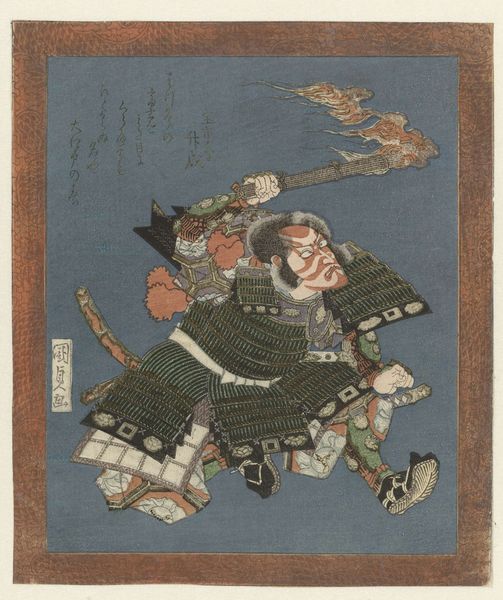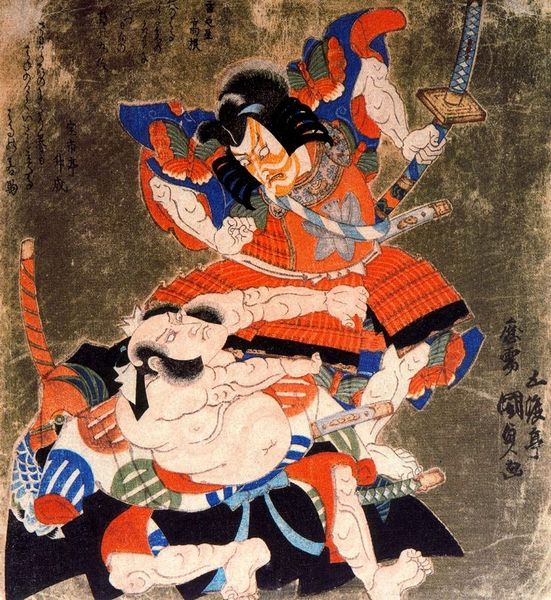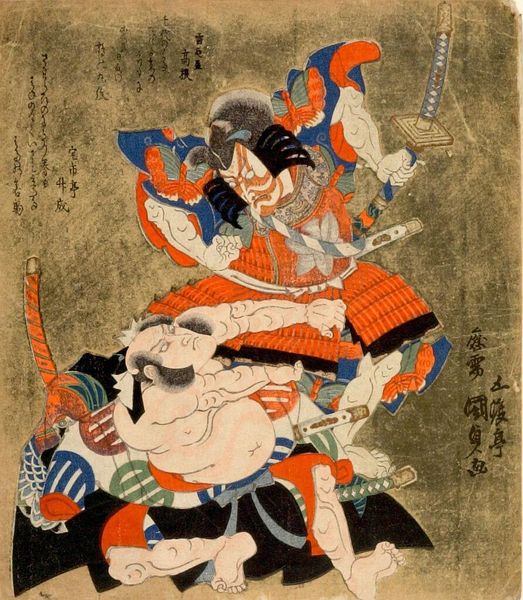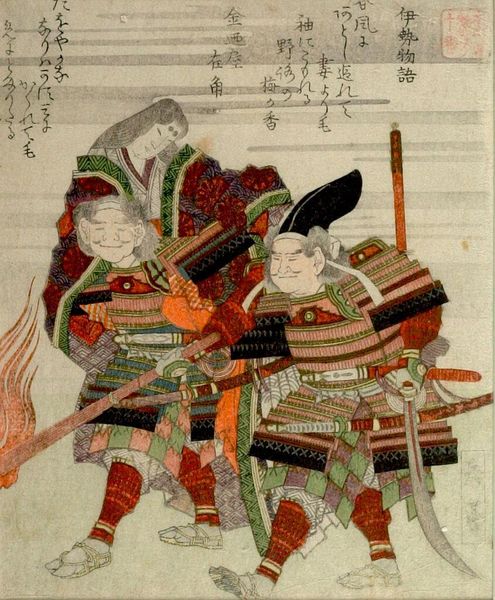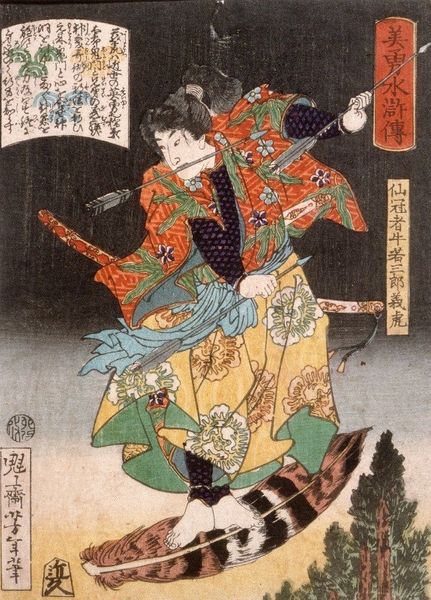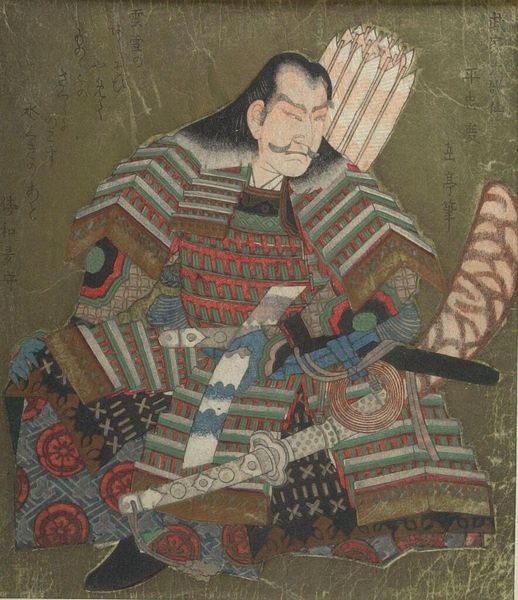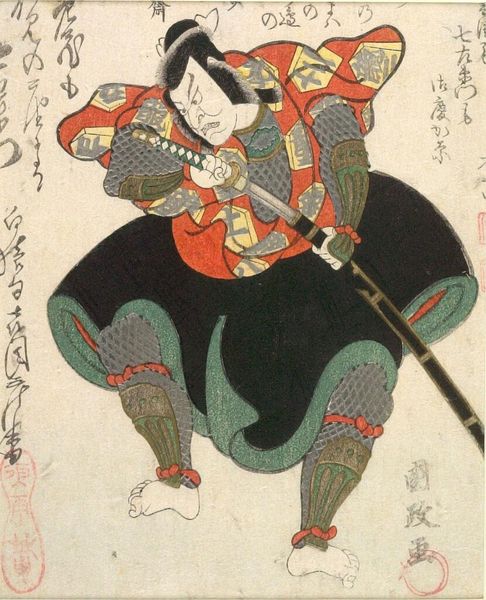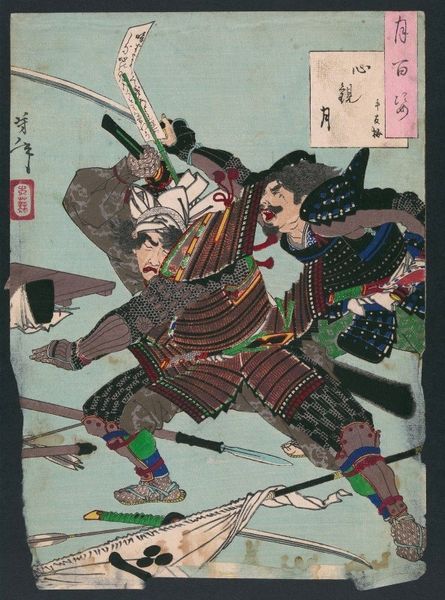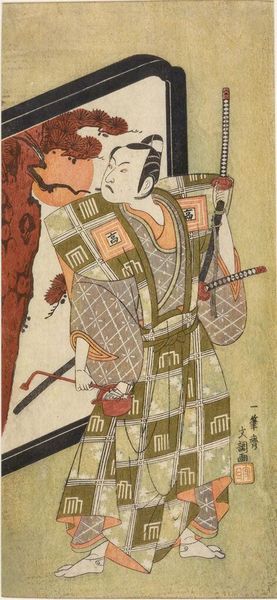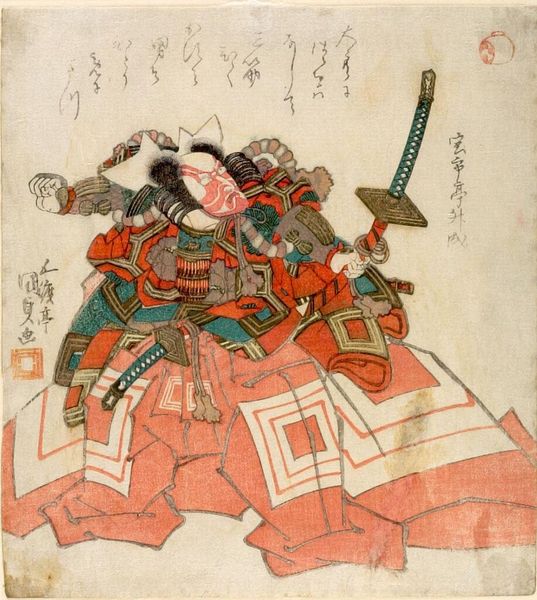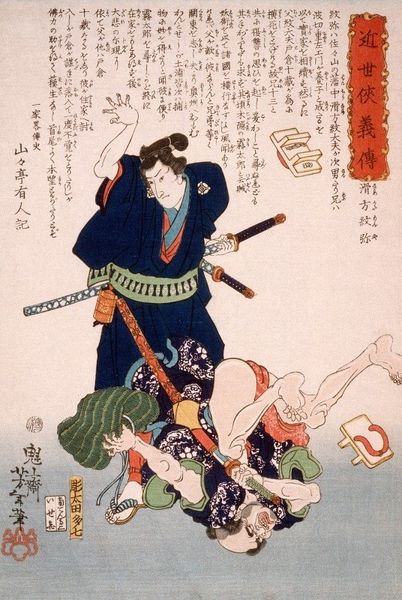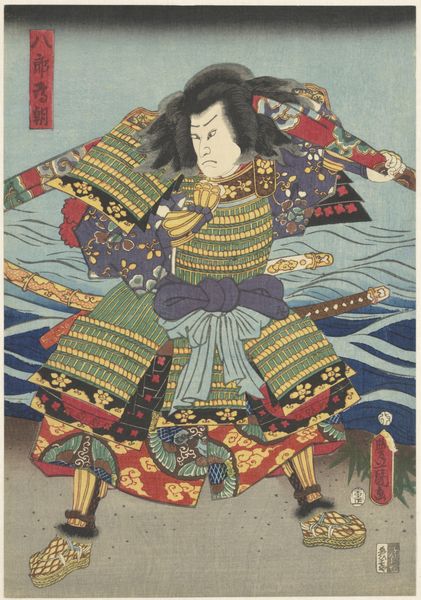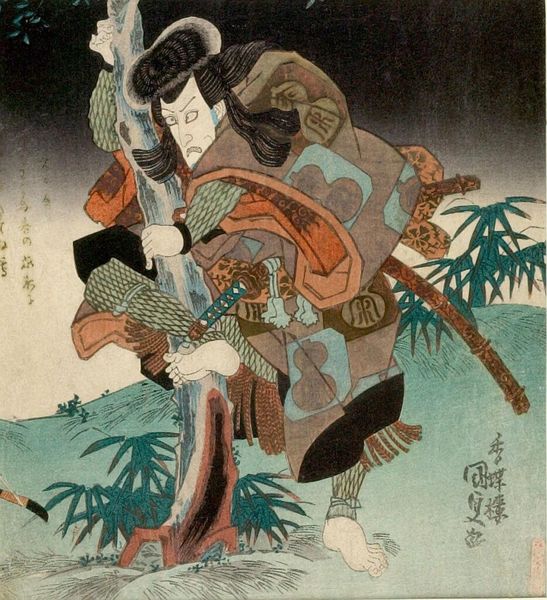
Actor Ichikawa DanjÅ«rÅ 7th as I no Hayata (from a set of three spring kyÅka surimono) c. 1820 - 1823
0:00
0:00
Dimensions: shikishi-ban: Paper: H. 21.1 cm x W. 18.2 cm (8 5/16 x 7 3/16 in.)
Copyright: CC0 1.0
Editor: Here we have Utagawa Kunisada's print of "Actor Ichikawa DanjÅ«rÅ 7th as I no Hayata," held at the Harvard Art Museums. The theatrical energy jumps right out! What can you tell me about the significance of this imagery? Curator: Consider the context of kabuki theatre in 19th century Japan. These prints, known as surimono, served not just as art, but as publicity and social currency. The actor's specific role, I no Hayata, and the DanjÅ«rÅ lineage, are crucial pieces of information. Does that prompt any further thoughts? Editor: It makes me wonder about the power dynamics at play - the artist, the actor, and their audience all intertwined through these images. It's more than just a portrait, it's a statement! Curator: Exactly. And the very act of collecting and displaying prints like these helped define social status and taste within the urban centers of Edo-period Japan. Editor: It’s fascinating to see how much social weight these images carried! Curator: Indeed. Art like this reminds us that images are never neutral, they are active participants in shaping culture.
Comments
No comments
Be the first to comment and join the conversation on the ultimate creative platform.
